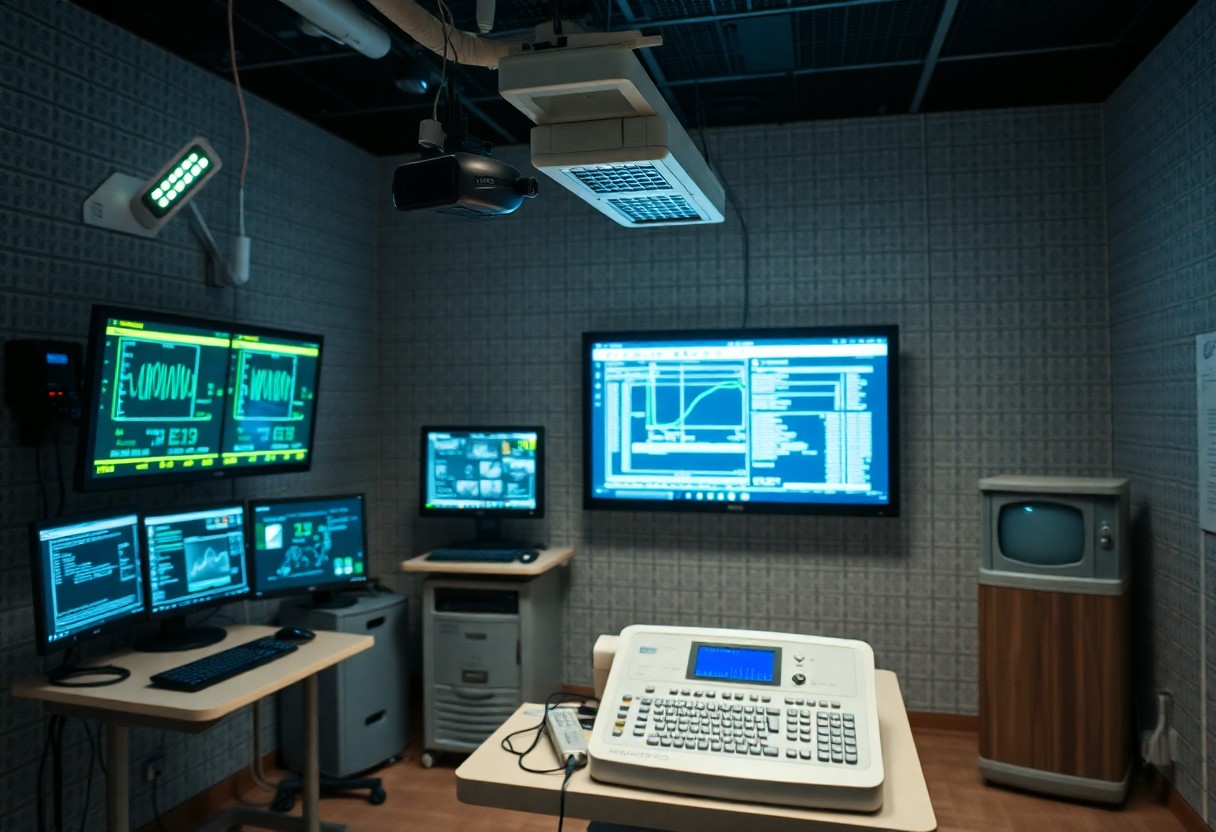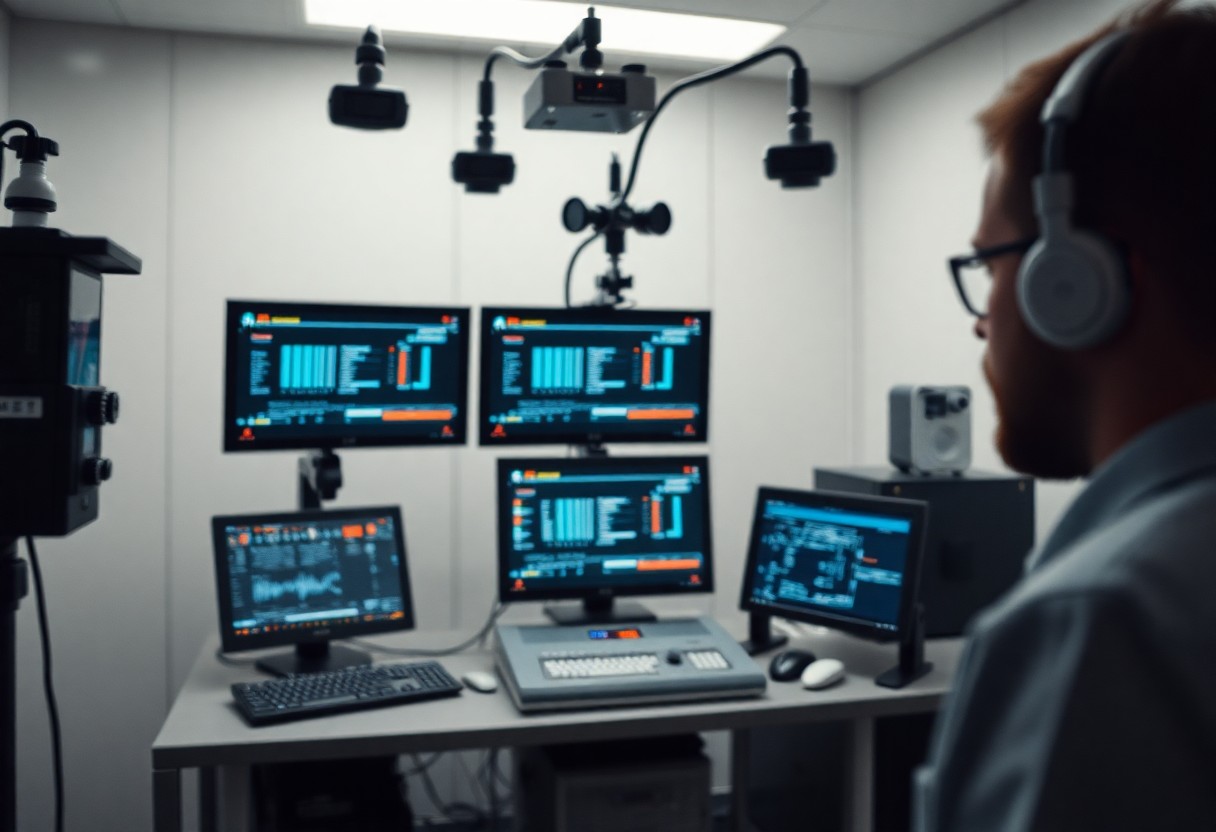
Monitoring physiological responses through biometric systems can significantly enhance the effectiveness of traditional polygraph methods. By integrating technologies such as heart rate variability, skin conductance, and facial recognition, you can obtain a more comprehensive understanding of a subject’s emotional states. This multi-layered approach not only increases the accuracy of your evaluations but also serves as a reliable tool in high-stakes environments, improving the overall reliability of the results you obtain. In this post, you will learn effective strategies to implement these systems seamlessly into your current practices.
Key Takeaways:
- Integrating biometric monitoring systems can enhance the accuracy and reliability of polygraph results by providing additional physiological data, such as heart rate variability and skin conductivity.
- Establishing clear protocols and training for personnel is crucial to effectively utilize biometric data alongside traditional polygraph techniques, ensuring consistency in administration and interpretation.
- Continuous evaluation and improvement of the system, including regular updates to technology and methods, can lead to better outcomes and increased credibility in the results obtained from both biometric and polygraph assessments.
1. Integrate biometric data for enhanced accuracy in assessments.
2. Combine physiological readings with polygraph results for reliability.
3. Train personnel on interpreting biometric data effectively.
4. Ensure data privacy and security for sensitive information.
5. Regularly update technology to align with industry standards.
6. Collect comprehensive feedback to improve system performance.
Traditional Polygraph Methods
Before exploring the integration of biometric monitoring systems, it’s imperative to understand traditional polygraph methods. This baseline approach relies on measuring physiological responses during questioning to assess truthfulness, primarily through changes in heart rate, blood pressure, breathing patterns, and galvanic skin response.
Physiological Measurements
Measurements taken during a polygraph examination focus on several key physiological indicators that may reveal stress or deception. These include heart rate, which can indicate tension; blood pressure, reflecting emotional changes; and respiratory patterns that may signify nervousness. Together, these metrics help to form a narrative about the subject’s honesty.
Current Limitations and Challenges
Traditional polygraph methods have notable limitations that you should consider. While they provide valuable insights, results can be affected by various factors such as anxiety, medications, or even individual differences in physiological responses. This variability can lead to false positives or negatives, undermining the reliability of results.
But it’s important to note that these inherent challenges extend beyond mere inaccuracies. The potential for misinterpretation poses significant risks, especially in high-stakes situations like criminal investigations or employment screenings. Moreover, a lack of standardization in test administration and interpretation can further compromise outcomes, creating a demand for more robust and reliable methods to ensure that your assessments are both effective and credible.
Biometric Monitoring Technologies
Even though traditional polygraph methods have been widely utilized, the integration of biometric monitoring technologies offers an innovative enhancement to the process. These technologies can provide deeper insights into physiological responses, thereby increasing the accuracy and reliability of assessments. By adopting biometric methods alongside conventional techniques, you can significantly elevate the efficacy of your monitoring systems.
Advanced Sensor Systems
Technologies using advanced sensor systems are vital in capturing various physiological responses. These sensors can evaluate factors such as heart rate, skin conductance, and facial recognition, providing a more comprehensive understanding of an individual’s emotional and psychological state.
| Feature | Description |
| Heart Rate Monitoring | Tracks fluctuations in heart rate to indicate stress levels. |
| Skin Conductance | Measures sweat gland activity related to arousal and anxiety. |
| Facial Recognition | Analyzes facial expressions for emotional responses. |
Real-time Data Collection Mechanisms
Along with advanced sensors, real-time data collection mechanisms play a pivotal role in enhancing the monitoring process. These systems allow you to gather, analyze, and interpret data instantly, providing immediate feedback during assessments.
In addition, this capability facilitates a more dynamic approach to monitoring. By enabling immediate adjustments based on real-time data, you can better address anomalies and emotional fluctuations. This enhances your overall assessment strategy and ensures a more thorough understanding of the subject’s responses, thereby improving the likelihood of accurate results. Monitoring systems that leverage real-time data can help you make informed decisions swiftly, ultimately leading to more effective outcomes.
Integration Framework
Many organizations are exploring how to integrate biometric monitoring systems to enhance traditional polygraph methods. This involves developing an understanding of the landscape of facial processing applications in various domains, including security and law enforcement. An effective integration framework streamlines data collection, processing, and analysis, ensuring that both biometric and polygraph results complement each other for improved accuracy.
Hardware Components
Hardware integration is important for implementing biometric monitoring systems effectively. You’ll need high-quality sensors that can accurately capture biometric data, such as fingerprint scanners, facial recognition cameras, and voice stress analyzers. Coupled with reliable data storage systems, these components form the backbone of your biometric setup, providing the necessary infrastructure to support real-time data processing.
Software Architecture
Below the surface, an adaptable software architecture is pivotal for integrating biometric data with traditional polygraph methods. You should focus on modularity, ensuring that your system can seamlessly incorporate new biometric technologies as they emerge.
Consequently, your software architecture needs to prioritize scalability and interoperability. This allows you to handle increasing amounts of biometric data while facilitating communication between different components. It’s also important to implement stringent security measures to protect sensitive data against unauthorized access. Integration of advanced analytics can further enhance your system, enabling real-time insights into physiological responses, which can significantly improve the reliability of assessments.
Data Processing and Analysis
Despite the advancements in biometric monitoring systems, the effectiveness of data processing and analysis remains imperative. You need to ensure that the data collected from biometrics is accurately interpreted alongside traditional polygraph results. A comprehensive approach that combines both systems enhances the reliability of your findings and provides a more holistic understanding of the subject’s physiological responses.
Signal Processing Algorithms
Across industries, signal processing algorithms are vital for managing and interpreting biometric data. These algorithms are designed to filter out noise, enhancing the clarity of the signals obtained from various biometric sensors. By implementing robust signal processing techniques, you can ensure that the physiological signals you analyze are precise, which ultimately leads to more valid results.
Machine Learning Applications
Processing the vast amounts of data collected from biometric systems can be overwhelming. However, integrating machine learning applications into your analysis can significantly improve your accuracy and efficiency. You can leverage algorithms to identify patterns and anomalies within the biometric data, which aids in drawing meaningful conclusions about the subject’s psychological state. These algorithms facilitate predictive analysis, enabling you to recognize behaviors associated with deception or stress, thus enhancing the overall efficacy of your assessment.
With machine learning applications, your capability to analyze complex datasets elevates significantly. These advanced techniques allow you to develop predictive models that can identify subtle changes in biometric signals, providing deeper insights into human behavior. You can train models using historical data, ensuring they become more refined and accurate over time. This integration not only streamlines your data analysis process but also empowers you to make more informed decisions in conjunction with traditional polygraph methods, enhancing the overall effectiveness of your assessments.

Implementation Protocol
Not every organization may find it easy to incorporate biometric monitoring systems alongside traditional polygraph methods. To ensure a successful integration, it is advisable to refer to resources like Uncovering the Truth | U.S. Customs and Border Protection, which provide insight into effective practices.
System Setup Guidelines
At the outset of your implementation, establish a clear plan that outlines the hardware and software requirements for the biometric system, as well as integration points with existing polygraph equipment. Ensure thorough training for your team on how to operate these systems effectively.
Calibration Procedures
Above all, calibration of your biometric monitoring systems must be a priority to maintain accuracy and reliability. Periodically assess the system’s performance against standards to ensure that results remain valid.
It is crucial to conduct regular calibration checks to confirm that your biometric systems function as intended. Be vigilant about environmental factors that could affect readings, such as temperature and humidity. A consistent calibration timeline not only enhances accuracy but also helps identify any potential malfunctions early on, permitting prompt adjustments. Following manufacturer guidelines carefully is vital to ensure that your biometric systems provide reliable insights when integrated with polygraph methods.
Validation and Quality Assurance
Once again, implementing a robust validation and quality assurance framework is crucial for the successful integration of biometric monitoring systems with traditional polygraph techniques. This framework should include regular calibration of devices, adherence to industry standards, and comprehensive training for personnel to ensure that all aspects of the systems are functioning optimally. By maintaining these high standards, you can foster trust in the results and enhance the credibility of your assessments.
Testing Methodologies
On a practical level, employing diverse testing methodologies allows you to evaluate the effectiveness of biometric systems alongside traditional polygraph methods. Techniques such as field studies, controlled laboratory comparisons, and real-time assessments can provide invaluable data. By systematically applying these methodologies, you can uncover possible discrepancies and ensure that both systems complement each other seamlessly.
Performance Metrics
At its core, establishing clear performance metrics is vital for gauging the effectiveness of your biometric monitoring systems in conjunction with traditional polygraph assessments. Metrics may include accuracy rates, false-positive and false-negative rates, and overall reliability in identifying deceptive behaviors.
And to truly harness the potential of performance metrics, you should continuously analyze and refine them based on your findings. Metrics such as accuracy ratings directly impact the validity of your assessments, while false-positive and false-negative rates can lead to significant consequences in high-stakes environments. Regularly revisiting these metrics ensures that your methods remain effective and trustworthy, ultimately enhancing your overall investigative process.
Summing up
Ultimately, integrating biometric monitoring systems with traditional polygraph methods can significantly enhance your ability to assess truthfulness. By leveraging advanced technologies such as heart rate variability and voice stress analysis, you can create a more comprehensive understanding of physiological responses during interviews. This multifaceted approach not only increases the reliability of your findings but also helps you address the limitations of standard polygraphs. As you implement these systems, ensure you remain informed about the latest advancements and best practices to maximize their effectiveness in your investigations.
FAQ
Q: What are biometric monitoring systems and how do they complement traditional polygraph methods?
A: Biometric monitoring systems utilize physiological data such as heart rate, skin conductivity, and facial recognition to assess emotional and cognitive states. These systems can augment traditional polygraph methods, which primarily measure physiological responses such as blood pressure and respiration. By combining data from both modalities, practitioners can achieve a more comprehensive understanding of an individual’s behavioral cues, enhancing the overall effectiveness of lie detection processes.
Q: What are the key steps in implementing biometric monitoring systems alongside polygraph techniques?
A: Implementing biometric monitoring systems alongside traditional polygraph techniques involves several key steps:
1. Assessment of Requirements: Identify the specific needs of your investigative process and determine which biometric variables are relevant.
2. Technology Selection: Choose appropriate biometric devices that best fit your budget and capabilities, ensuring compatibility with existing polygraph equipment.
3. Training Personnel: Provide training for personnel on how to use and interpret data from both biometric systems and polygraphs effectively.
4. Integration of Data: Establish protocols for integrating data collected from both systems for a holistic view during examinations.
5. Continuous Evaluation: Regularly assess the effectiveness of the combined approach and make adjustments as necessary to improve accuracy and reliability.
Q: What are some challenges faced when integrating biometric monitoring with polygraph tests?
A: Several challenges can arise when integrating biometric monitoring with polygraph tests, including:
1. Data Interpretation: The interpretation of biometric data can be complex and may require specialized knowledge to avoid misinterpretation alongside polygraph results.
2. Technological Compatibility: Ensuring that the biometric systems and the polygraph equipment can operate seamlessly together without technical issues is imperative.
3. Privacy Concerns: The use of biometric data raises privacy and ethical considerations, necessitating clear policies and informed consent from subjects.
4. Cost and Resource Allocation: Implementing new systems requires investment in technology and training, which may be a barrier for some institutions.
5. Standardization: Establishing standardized practices for using both systems can be challenging, particularly in diverse organizational settings. Addressing these challenges upfront can lead to a more effective implementation process.
